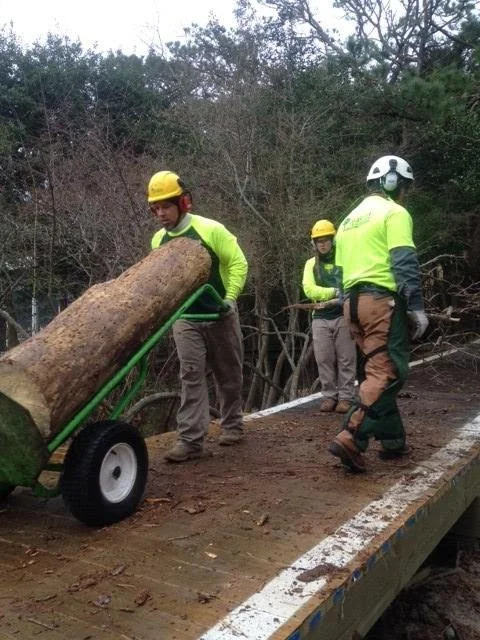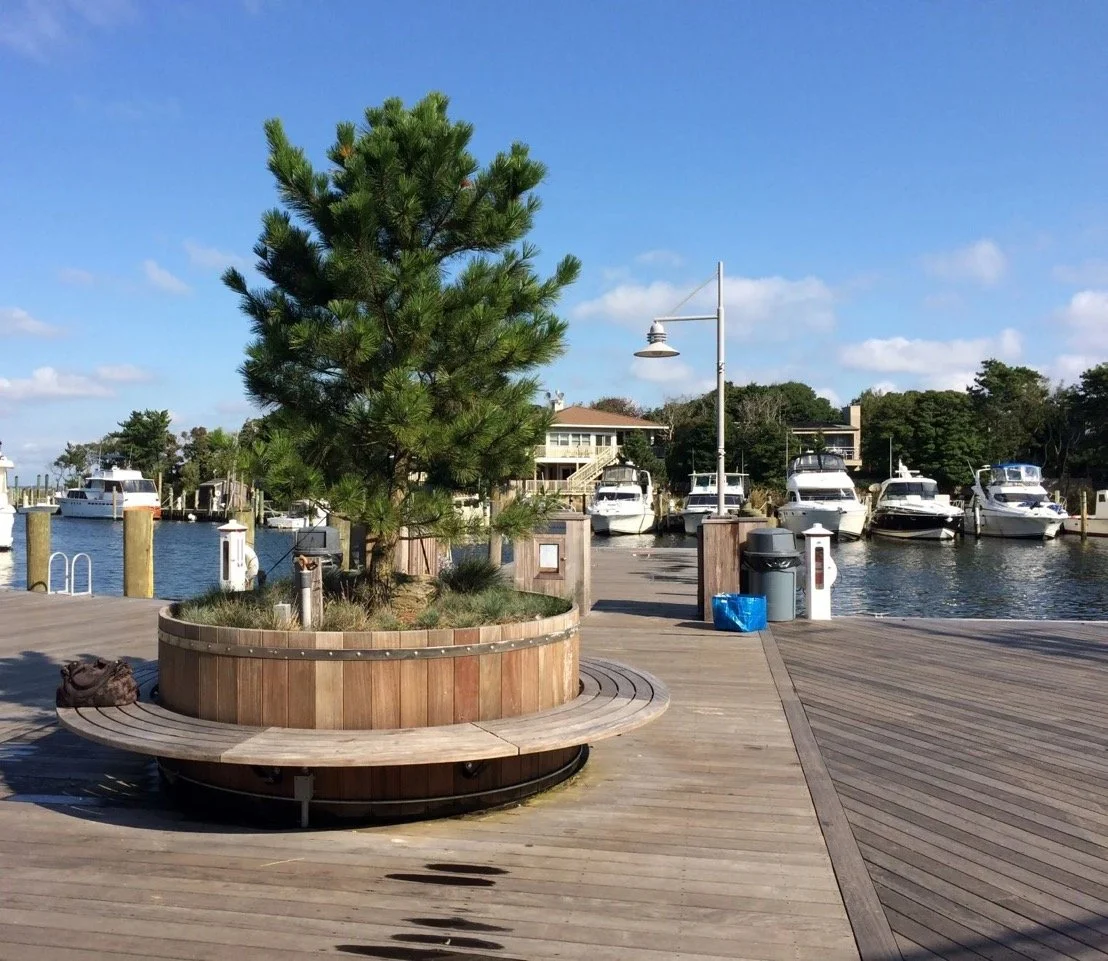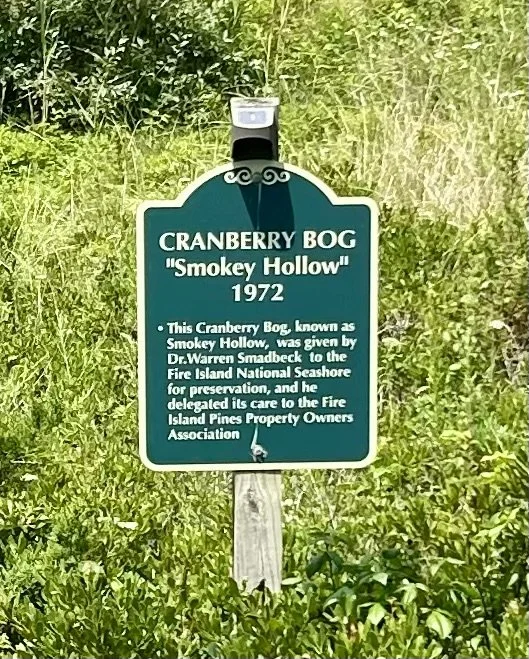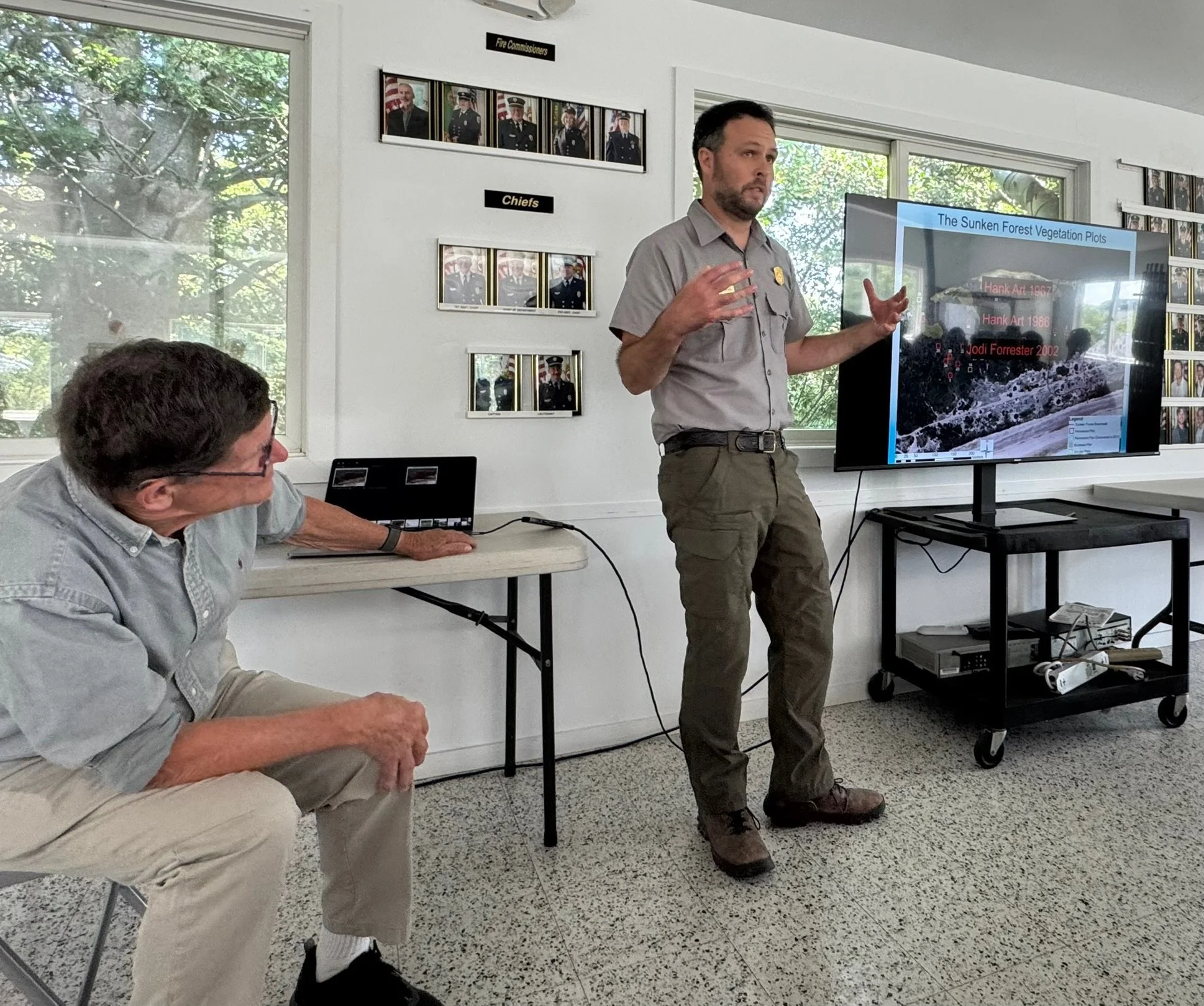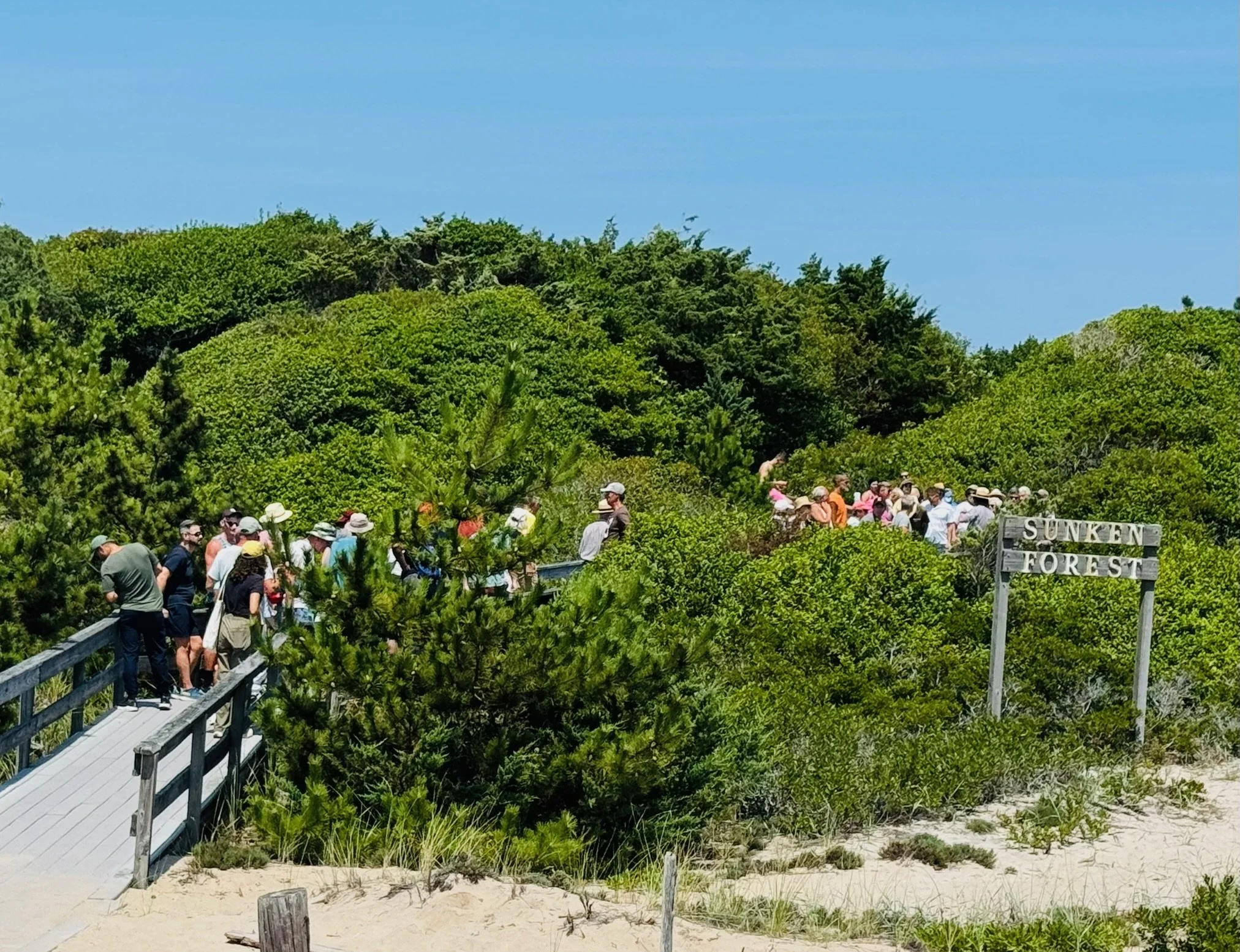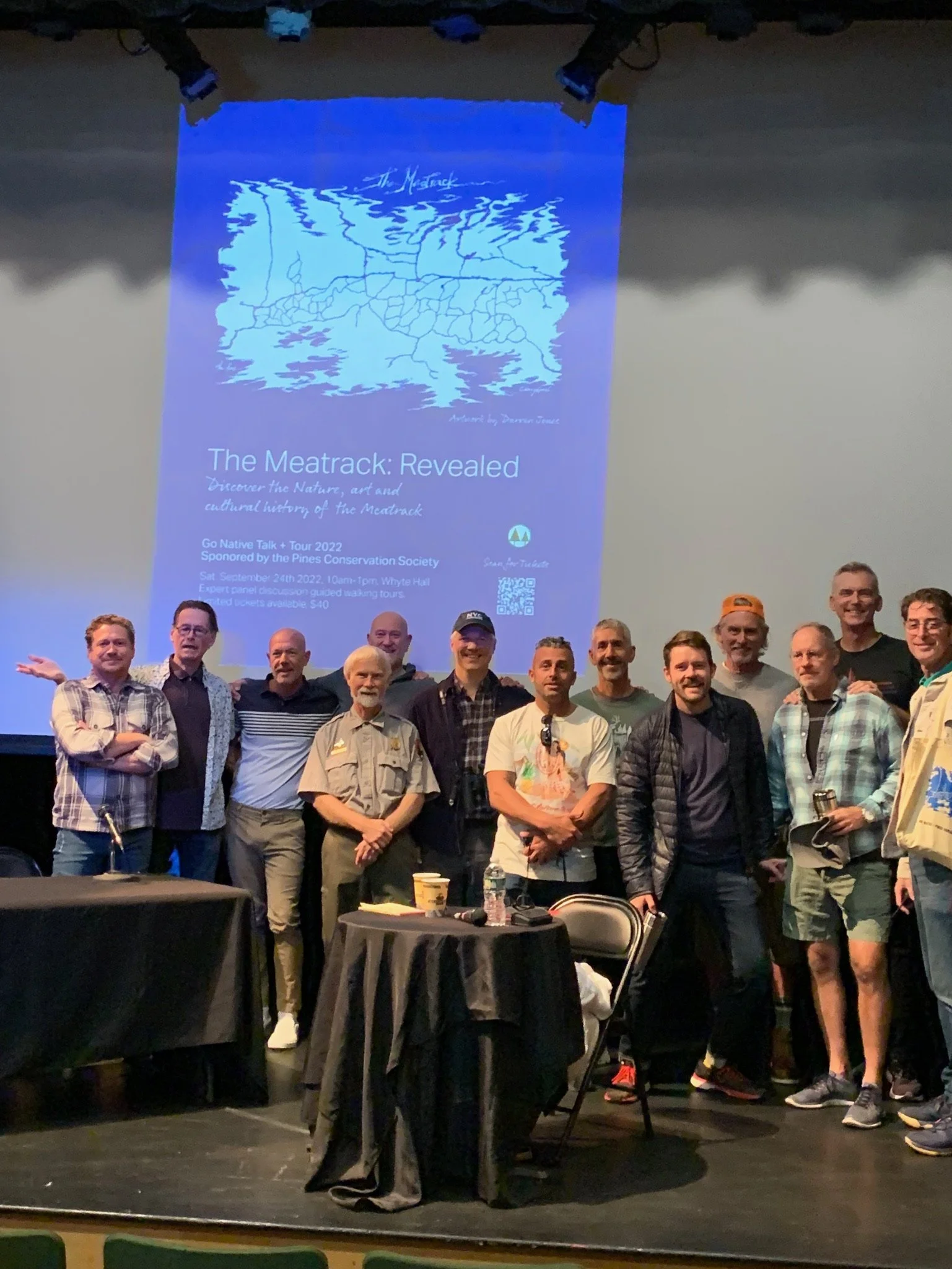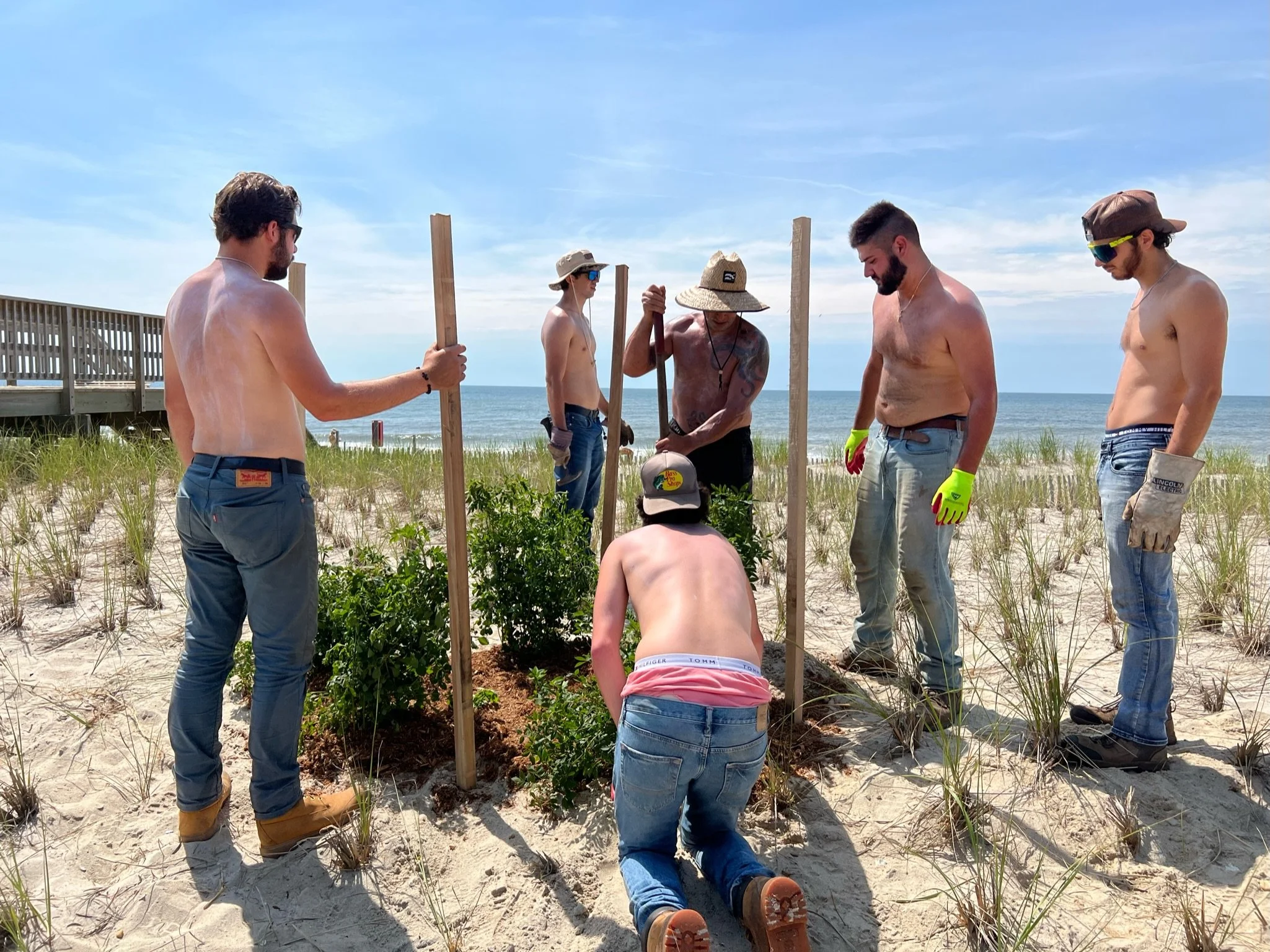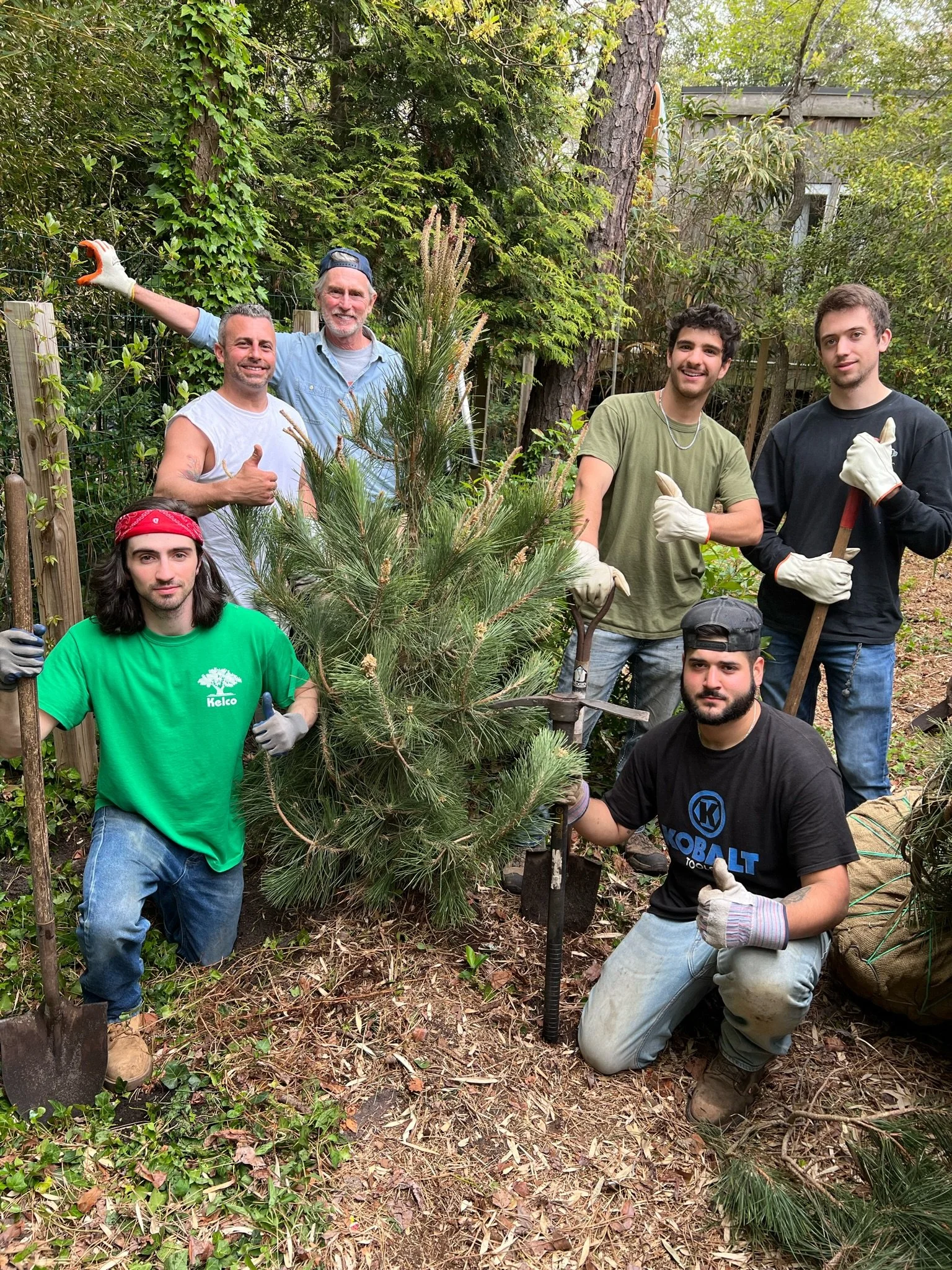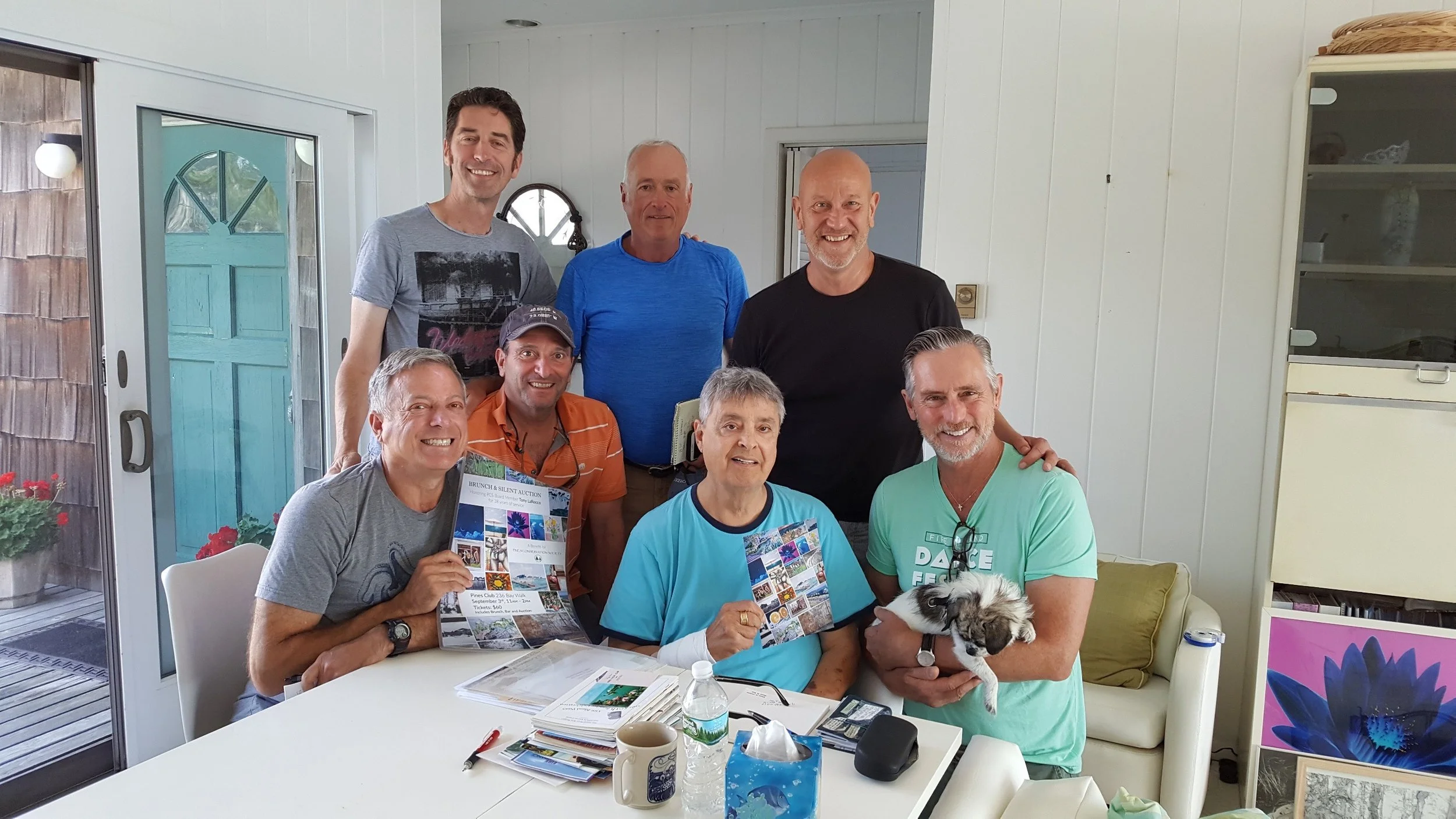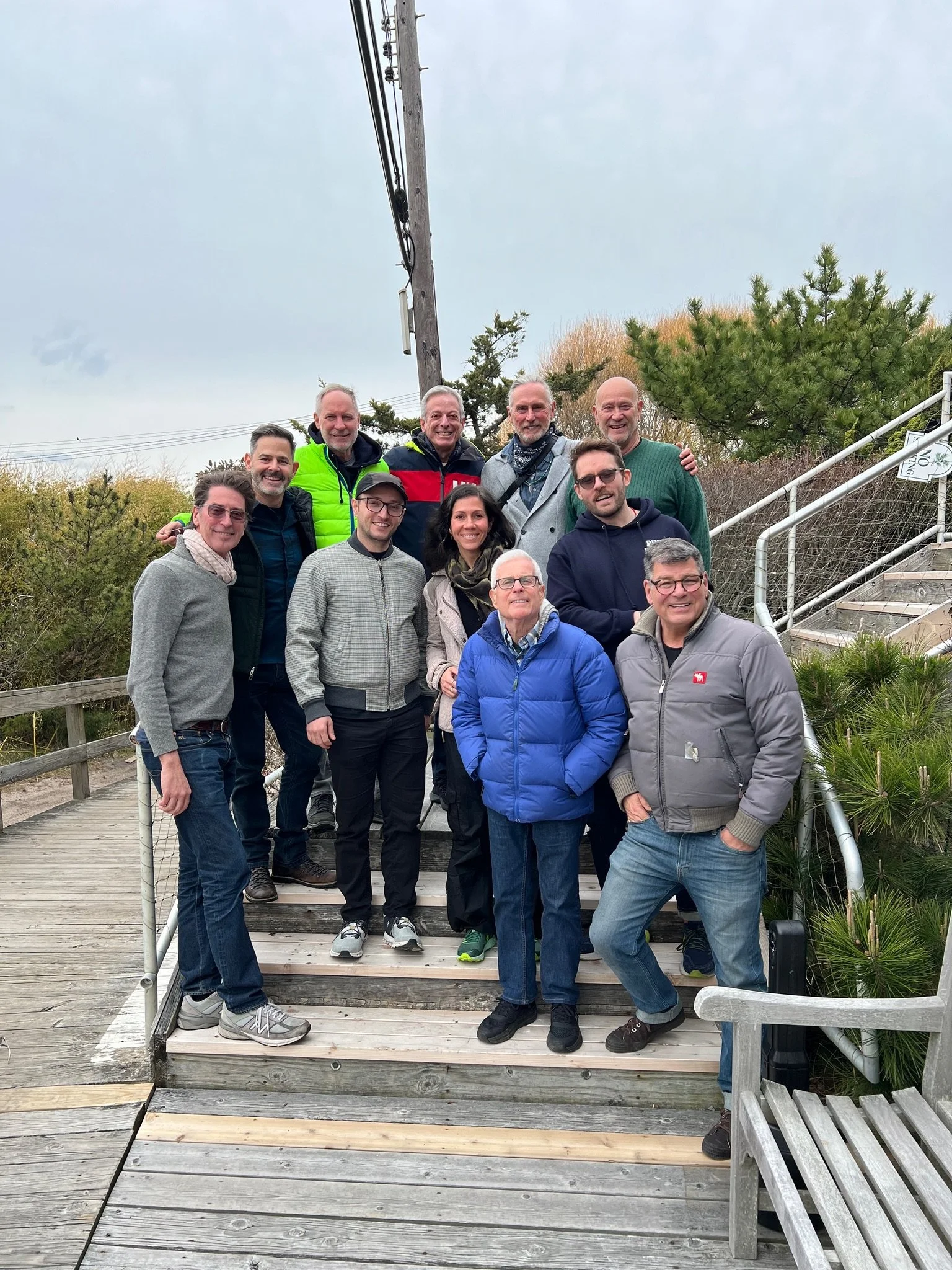The Pines Conservation Society (Est. 1962)
PCS Vintage Image: FIPHS Archives.
A Legacy of Stewardship
One of the most defining features of Fire Island Pines is its breathtaking natural beauty. A lush haven of trees, flowers, and dunes, the community is laced with winding boardwalks that follow the island’s gentle contours. Glamorous beach houses are embedded within this landscape, tucked into the dunes or nestled among the trees. It is a place where people traverse the community primarily by foot, and live side by side with deer, foxes, squirrels, and a chorus of birds and insects. The beach, wide and white, remains remarkably pristine despite the seasonal influx of residents, guests, and pets. For many, the Pines is nothing short of paradise. But this beauty did not simply occur by chance. It is the result of generations of dedicated residents who have invested their time, labor, creativity, and resources to protect and preserve it. Among the most vital of these stewards is the Pines Conservation Society (PCS).
PCS was established in response to a simple but urgent need — preserve the fragile beauty and biodiversity of Fire Island Pines. Its creation was an important step in the long history of conservation in the Pines, dating back to one of its earliest residents, Alice Thorpe. Today, its mission remains critical to the community’s future, especially with the growing challenges of climate change.
From the start, the Pines community has wrestled with balancing preservation with development. When President Lyndon B. Johnson designated Fire Island a National Seashore in 1964, it froze the island’s footprint and provided essential protections for its environment. Yet even then, it was clear that storms, invasive species, and human activity posed ongoing risks.
In 1962, attorney Milton Stanson and a group of homeowners established PCS, making it one of the first organized conservation voices in the Pines. It was later incorporated as a 501(c)-3 in 1969.
FI News Article featuring Milton Stanson
In 1970, John B. Whyte, the influential owner of the Blue Whale and a co-founder of PCS, took the helm. He used his business acumen and prominence in the community to transform the organization into a lasting institution.
John Whyte. Photo credit: unknown
From the outset, the Society’s mission was clear: to preserve and restore the native biodiversity of the Pines, and to educate both residents and visitors about the unique ecosystem that makes this place unlike anywhere else. That mission has guided every program and initiative for more than six decades.
As PCS became more established in the community respected figures joined the board including, Jack and Rita Lichtenstein, Henry Muller, Tony La Rocca, Albert LePage and Bob Howard, who would later succeed John as President in 2003.
Bob Howard who succeeded John Whyte as President of PCS. Photo credit: Nicholas Politis
Since its founding, PCS has consistently advocated for ecological health and engaged in post-storm beach cleanup, as well as re-plantings to replace lost trees and plants. These efforts, which continue to this day, have not only kept the Pines lush and green, but also supported the wildlife that depend on its forest cover.
To fund its activities, PCS tapped into the Pines’ unique social culture, even staging fashion shows that drew international celebrities to support its cause until the HIV epidemic resulted in its cancellation.
Coverage of the Pines Fashion show that raised money for PCS. Photo credit: Fire Island Villager
In 2014, the Pines experienced a terrible infestation of the Southern Pine Beetle, representing one of the most serious ecological threats to the community. The beetle targeted the very tree that gave the community its name, killing them within 2-4 months of infestation.
Scott Ahlborn, a trained landscape architect who had joined the PCS board two years prior, spearheaded the effort to respond to this threat. PCS partnered with the Fire Island National Seashore in a successful effort to arrest the problem, which included hiring crews to remove infected trees.
Tree removal. Photo credit: PCS
The initiative has since evolved into an on-going program, conducted in partnership with Fire Island Pines Property Owners Association (FIPPOA) to take down dead trees on public property and provide homeowners with a cost-effective and convenient way to buy pine trees for their properties. In this way, the iconic pine tree will always be present in the community that bears its name.
Pine trees procured by PCS for the community. Photo credit: PCS
Symbolic of all this ongoing effort, in 2000, PCS designed and donated the circular planter bench and pine tree in the harbor that greets travelers arriving and departing Fire Island Pines.
Pines Harbor. Photo credit: PCS
In addition to these protection and preservation efforts, PCS was one of the pioneers of recycling, contributing funds for residential bins in the 1990s. The society also supported the reconstruction of the Pines Harbor in 2000, and donated the first wood chipper to the community that allowed branch and tree cuttings to remain on island and contribute to its replenishment.
Further, to ensure preservation stayed in the minds of residents and visitors, PCS has maintained the Cranberry Bog on Ocean between Nautilus and Crown Walks for over 50 years and kept the historic signs on the site updated.
Cranberry Bog sign. Photo credit: Virun Rampersad
Actions like these can easily go unnoticed, but they have played an important part in preserving the Pines for future generations. It is also work that needs to be on-going.
While PCS’s mission remains constant, its strategy has evolved to address today’s urgent realities. The worsening effects of climate change have demanded faster action, broader outreach, and stronger partnerships. The Society’s work now focuses on three major initiatives:
A broad community outreach and education program
PCS’ annual GO Native! program has become a seasonal highlight, combining expert talks with guided field walks. Participants learn how the local ecosystem and native plants are not only beautiful and resilient, but that also support pollinators, birds, and other wildlife. In addition to native plantings, these “Talks and Tours” have covered topics including bay ecology, bird watching and the Meat Rack. PCS provides resources and information for residents to help them live peaceably with nature, understand how best to protect against ticks and poison ivy, and practice eco-sensitive mosquito control including the successful campaign to stop mosquito spraying.
Go Native! activities. Photo credit: PCS
Increased visibility in the community
In 2022, PCS installed native demonstration plantings near the wagon rack in the Harbor, Whyte Hall and the post office, showcasing deer-resistant and pollinator-supporting plants. It has also partnered with the Seashore Defense Fund (SDF) to test a natural kelp fertilizer on the beach, aiming to strengthen dune grasses and bolster the island’s first line of defense against erosion.
Environmental restoration. Photo credit: PCS
Partnership with other organizations
Social movements are most effective if they cast a wide net and engage effectively. Over the years, PCS has worked hand in hand with FIPPOA, The Pines Foundation the Fire Island National Seashore/NPS and Pines Residents on various environmental projects like dune preservation and planting. They host an annual brunch, which is their sole fundraising endeavor, that allows residents and visitors to learn about their work and meet PCS members and hear their stories.
PCS Leadership. Photo credit: PCS
Today, there is near universal desire in the community to preserve and protect the Pines. PCS, led today by Scott Ahlborn (who became President in 2015) recognizes these desires and has recently undertaken a conscious effort to expand its board and volunteer base as a way to enhance participation and engagement.
More than half a century after its founding, PCS stands as one of Fire Island Pines’ most enduring institutions, and its board members, past and present, are duly proud of their accomplishments.
“Since 1962, PCS has brought thousands of trees to the Pines, restored harbor and dune landscapes, and educated countless residents about how to live in harmony with the fragile environment they call home. It has also built a model of community conservation that blends science, tradition, and local pride.” - Scott Ahlborn
Scott Ahlborn. Photo credit: Scott Ahlborn
The challenges the Pines faces today—rising seas, intensifying storms, invasive pests—are formidable. But just as in 1962, when a small band of homeowners first came together to act, PCS continues to meet these with resilience, creativity, and commitment. In doing so, it helps ensure that the Pines will remain not just a place of beauty and belonging, but also a living, thriving ecosystem for generations to come.







